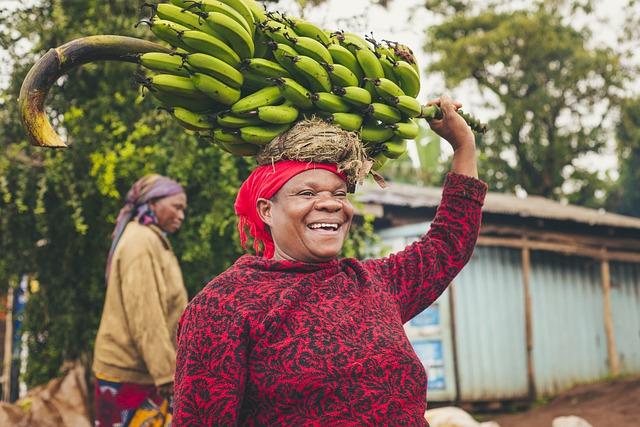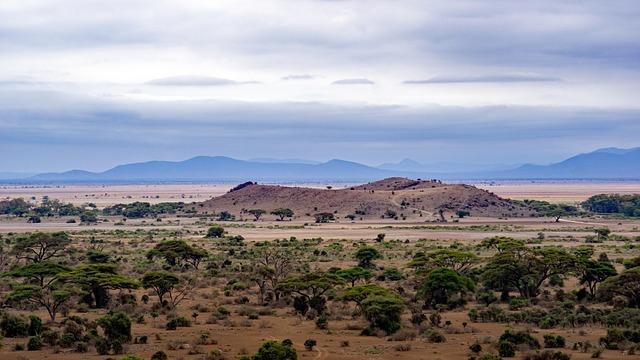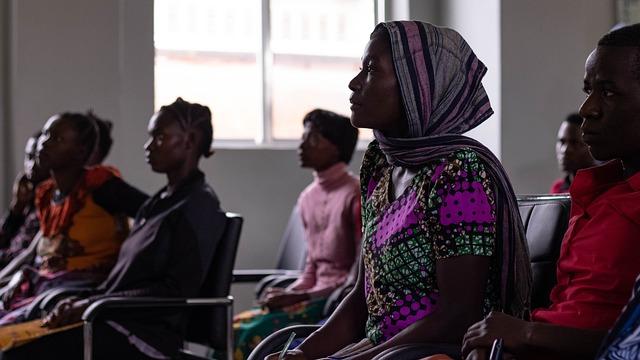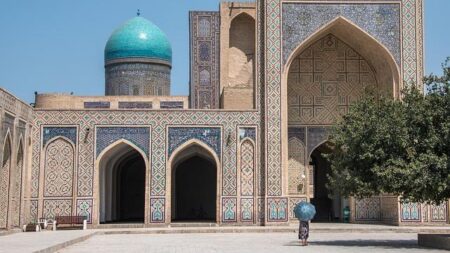Tanzania is poised to bolster its status as a regional hub for business and tourism with the declaration of plans to construct East AfricaŌĆÖs largest conference center in Arusha. The aspiring project, aimed at enhancing the country’s international appeal, is expected to cater to various industries by providing a state-of-the-art venue for conferences, exhibitions, and events. With its strategic location and burgeoning infrastructure,Arusha is set to become a focal point for not only regional but also international gatherings. As the nation seeks to capitalize on its rich natural and cultural resources, the new conference centre will play a pivotal role in attracting global stakeholders and fostering economic growth. This growth signals a significant step towards transforming Tanzania into a competitive player in the MICE (Meetings, Incentives, Conferences, and Exhibitions) sector in East Africa.
Tanzania’s Ambitious Vision for Arusha’s Conference Centre
Tanzania is poised to make a significant impact on the region’s economic landscape with the development of an unparalleled conference centre in Arusha.This ambitious project aims to transform the city into a key hub for international meetings, trade events, and tourism. With a focus on modern architectural design and state-of-the-art facilities, the centre will not only enhance the local economy but also elevate Tanzania’s status as a prime destination for global gatherings. The project is part of a broader strategy to foster business opportunities and promote regional collaboration.
The envisioned centre will feature a range of amenities that cater to diverse needs, including:
- Extensive exhibition halls: Capable of hosting large-scale trade shows and exhibitions.
- Conference rooms: Flexible spaces equipped with modern audio-visual technologies.
- Networking areas: Designed to facilitate interactions among business professionals.
- Accommodation facilities: Convenient lodging options to meet the demands of visitors.
| Feature | Details |
|---|---|
| Location | Central Arusha |
| Capacity | 5,000 attendees |
| Completion Date | 2026 |
| Investment Cost | $100 million |
With strong government support and partnerships with private sectors, this project not only marks a significant investment in infrastructure but also underscores Tanzania’s commitment to enhancing regional connectivity and cooperation. The conference centre is expected to draw a plethora of international events,ultimately leading to increased tourism and economic growth across the region.

Economic Implications of East AfricaŌĆÖs Largest Conference Venue
The construction of East AfricaŌĆÖs largest conference centre in Arusha is set to create a ripple effect across TanzaniaŌĆÖs economy. By positioning itself as a premier destination for international and regional conferences, the venue is expected to attract a significant influx of visitors. This boost in tourism will lead to increased spending in various sectors including hospitality, transportation, and retail. local businesses, from hotels and restaurants to tour operators, stand to benefit immensely from the heightened economic activity. The conference center will also foster an environment for networking and collaboration,potentially leading to new investment opportunities and partnerships in key industries.
Moreover,the economic implications extend beyond immediate financial gains. The development of this facility will create numerous job opportunities during both the construction phase and its operational phase. Jobs will be generated not just in construction, but also in management, event planning, and services that cater to large events. The anticipated benefits include:
- Increased local employment opportunities
- Enhanced skills development and training for the workforce
- Advancement in infrastructure, including roads and utilities
- Boost to the real estate market through increased demand for commercial spaces
In addition, the center is expected to solidify Tanzania’s position as a leader in regional economic integration, paving the way for impactful collaborations that can address broader economic challenges in East Africa.

Sustainability Initiatives in the Design and Development
The upcoming conference center in Arusha represents a significant commitment to eco-friendly design and responsible resource management. The project will integrate lasting building practices to minimize its environmental impact. A few key aspects include:
- Energy Efficiency: The design features energy-efficient systems, including solar panels and advanced insulation, aiming to reduce carbon emissions.
- Water Conservation: Rainwater harvesting and greywater recycling systems will be implemented to ensure sustainable water usage.
- Local materials: Emphasis will be placed on using locally sourced materials to reduce transportation emissions and support the local economy.
- Green Spaces: The incorporation of green roofs and landscaping will enhance biodiversity and provide recreational areas for visitors.
In tandem with these features, there is a commitment to fostering a culture of sustainability within the operation of the conference center.This includes:
- Waste Management: A complete waste management plan will encourage recycling and composting among event organizers and attendees.
- Sustainable Transportation: The facility will offer incentives for eco-friendly transport options, such as bike racks and electric vehicle charging stations.
- Educational Programs: The center aims to host workshops and seminars focused on sustainability,raising awareness among participants and the community.
| feature | Description |
|---|---|
| Solar Panels | Harnessing renewable energy to power operations. |
| Rainwater Harvesting | collecting rainwater for irrigation and restrooms. |
| Local Material Use | Supporting local economy and reducing environmental footprint. |

enhancing Regional Collaboration through International Events
The construction of the largest conference centre in East Africa,located in Arusha,Tanzania,marks a significant step towards fostering regional collaboration. This state-of-the-art facility is designed to host a variety of international events,wich will not only elevate Tanzania’s profile on the global stage but also act as a hub for diplomatic,business,and cultural exchanges. By accommodating a diverse range of conferences, the centre aims to create opportunities for collaboration among East African nations, enabling them to tackle shared challenges and harness collective opportunities.
Besides fostering partnerships, the new conference centre is expected to stimulate local and regional economies through increased tourism and business travel. With its capacity to host large-scale events, the facility will attract international attendees, thereby facilitating networking and joint ventures. As a result, key benefits will include:
- Boosting local job creation: From hospitality to management services, various sectors will benefit.
- Promoting cultural exchange: Gatherings of various communities will foster a rich exchange of ideas and cultures.
- Driving infrastructure development: Enhanced infrastructure will improve overall connectivity and accessibility in the region.
| Key Features | Description |
|---|---|
| Capacity | up to 5,000 attendees |
| Facilities | Auditoriums, meeting rooms, and exhibition spaces |
| Technological Integration | Advanced audiovisual systems and Wi-Fi connectivity |
| Sustainability | Environmentally friendly construction materials and practices |

Challenges and Opportunities in Realizing the Project
as Tanzania embarks on the ambitious journey of constructing East AfricaŌĆÖs largest conference center in Arusha, several challenges loom on the horizon. Foremost among them is ensuring adequate financing and sustainable investment channels. The government must navigate the intricate process of engaging with stakeholders, securing funds from both local and international sources, and managing budgetary constraints. Additionally, logistical challenges such as sourcing materials, coordinating construction timelines, and maintaining quality standards could lead to potential delays, impacting the overall project timeline. There are also concerns regarding environmental impacts and how the project will integrate with the local ecosystem.
Conversely, this initiative presents promising opportunities that could catalyze economic growth in the region. By fostering a hub for international conferences and events, Arusha can elevate its visibility on the global stage, attracting tourists and business ventures alike. The conference center can become a catalyst for job creation, with opportunities arising in the hospitality, transport, and service sectors. Furthermore, it is an chance to develop the local workforce through skill training and development programs, enhancing employability and entrepreneurship. The project could also stimulate further infrastructural improvements in the surrounding areas, paving the way for a more interconnected East Africa.

Future Prospects for Tourism and Business Growth in Arusha
The upcoming establishment of East AfricaŌĆÖs largest conference centre in Arusha is set to usher in a transformative era for the region’s tourism and business growth. this ambitious project is more than just a venue for events; it is poised to become a catalyst for economic development. With increased capacity to host international conferences, trade fairs, and corporate gatherings, Arusha is anticipated to become a hub attracting visitors from all over the globe. this influx is likely to enhance the local economy through various channels, including:
- job Creation: The construction and operation of the conference centre will create numerous job opportunities for the local community.
- Boost in Hospitality Sector: Hotels, restaurants, and service providers will benefit significantly from the increased demand for accommodation and dining.
- Infrastructure Development: Improved roads, transport links, and utilities will follow in the wake of this significant investment.
As Arusha positions itself as a premier destination for business events, the ripple effects on local enterprises and touristic attractions cannot be overstated. The region’s natural beauty and rich culture will serve as a compelling backdrop for conference attendees, encouraging them to explore beyond the walls of the centre. This burgeoning growth is highly likely to manifest in:
| Sector | Expected Growth impact |
|---|---|
| Tourism | Increased visitor numbers leading to higher revenue for local businesses |
| Transport | Enhanced public transport and logistics infrastructure |
| Cultural Experiences | Greater visibility for local artisans, cultural sites, and heritage tourism |
In Retrospect
As Tanzania gears up to establish east Africa’s largest conference center in Arusha, the initiative promises to elevate the region’s status as a hub for international gatherings and conferences. This development not only reflects the country’s commitment to fostering economic growth and tourism but also underscores Arusha’s potential as a pivotal player in the global event landscape. With ambitious plans in place, stakeholders are optimistic that the new facility will create jobs, boost local businesses, and enhance the overall infrastructure of the region. As this project unfolds,it will be crucial to monitor the implementation process and its long-term impacts on both the local and national economy. Ultimately, the conference center in Arusha stands as a testament to Tanzania’s vision for a future enriched by collaboration and innovation, poised to attract global attention and investment.







